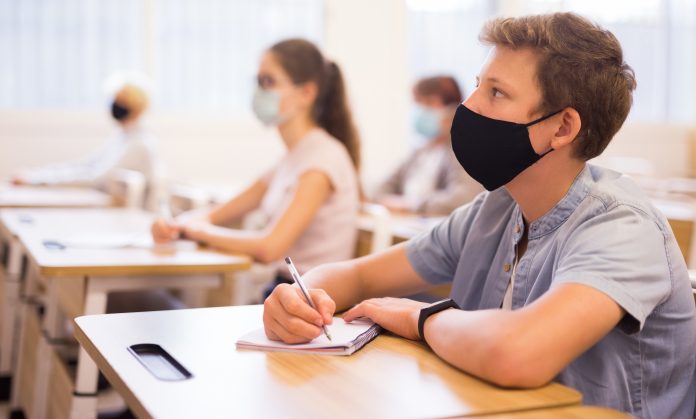According to ventilation specialists, S&P UK, building ventilation systems reduce the spread of airborne diseases by half compared to natural ventilation for schools, offices, and hospitality venues
S&P UK has released the findings of detailed research carried out by their European R&D centre aimed at shedding light on whether mechanical or natural ventilation should be used to improve air quality and curb the risk of contracting airborne diseases such as Covid in indoor environments.
The study by S&P UK found mechanical ventilation systems reduce by half the risk of Covid aerosol transmission compared to natural ventilation, such as opening windows and doors which has the added disadvantage of letting in noise, pollution and cold air in the winter.
With lockdown easing and the UK vaccination rollout on track, more businesses, office managers, headteachers and other building owners are seeking clarity from the government, the scientific community and industry bodies on how best to minimise the spread of Covid in an enclosed space.
Covid is spread via infectious aerosols which can stay airborne for long periods, particularly in poorly ventilated areas.
The detailed scientific modelling and analysis by S&P researchers considered three scenarios: schools, offices, and bars/restaurants.
After four days in a classroom of 24 students wearing masks and an infected teacher, the accumulated probability of infection is 21% with natural ventilation – or five pupils infected. With mechanical ventilation, it is 9% – or two pupils infected. With no ventilation, seven contract Covid. If a student is positive rather than the teacher, the numbers are halved.
In the winter, opening windows for 10 minutes every hour results in a 4.8% infection rate, meaning four cases after day four – twice as high as mechanical ventilation.
In an open plan office with 40 workers where one is infected, with everyone wearing masks, there are four infected employees after four days with natural ventilation, and two with mechanical. With no masks, it rises to 13 with open windows and eight with mechanical.
There are long-held concerns that most offices only recirculate existing air with air-conditioning units, rather than pumping in fresh air using mechanical ventilation systems.
‘Twice as good’ as natural ventilation
Alex Finch, managing director of S&P UK, said: “Our research shows that investing in mechanical ventilation systems must be considered by anyone who helps to manage any indoor space, whether that’s a headteacher, an office manager or a restaurant owner.
“That’s because our evidence is clear: mechanised ventilation systems are twice as good as natural ventilation when it comes to reducing the risk of spreading airborne diseases like Covid-19 indoors.
“There’s plenty of generic advice on ventilation but so many sections of society are crying out for official and clear-cut guidance on the exact best ventilation for typical scenarios. We also recognise that the failure to distinguish between indoor mechanical or natural ventilation as part of this ongoing debate is not surprising as it’s a complex and new challenge.
“But we believe our research, inspected by our technical teams, will add some weighty evidence for specialists across the H&V sector and can help provide clarity for those who are looking to actively improve their work environments to minimise transmission of Covid.”







![[VIDEO] UK-based firm reveals ‘world’s first’ fully AI-driven architectural project Studio Tim Fu has revealed the 'world's first' fully AI-driven architectural project in Slovenia, developing six luxury villas on the Lake Bled Estate](https://www.pbctoday.co.uk/news/wp-content/uploads/2025/03/Interior-1-studio-tim-fu-218x150.gif)






